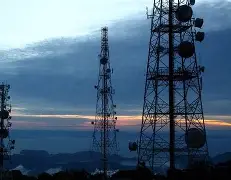LIMITED ACCESS TO COMMUNICATION TOOLS
Limited access to communication tools in rural communities directly affects the operation and sustainability of solar power systems. Communication tools like mobile phones and the internet are essential for educating communities about solar energy, coordinating installations, and providing ongoing technical support. In many rural areas, solar energy is delivered through pay-as-you-go systems or remote monitoring services, which rely on digital communications to function effectively. Without these tools, it becomes harder to manage payment, report issues, receive updates, making solar systems less efficient or even unusable. As a result, limited communication access can slow the adoption of solar power and hinder its long-term success in improving energy access for rural populations.
FARMERS AND SMALL BUSINESS
Farmers and small businesses play a crucial role in powering solar energy in rural communities by serving as both users and advocates for clean and renewable solutions. In many rural areas such as Simpson County the access to reliable electricity can be limited or costly. Making solar power an attractive and sustainable alternative. Farmers often have large plots of land and high energy demands for irrigation, refrigeration, and machinery. Similarly, small businesses like local stores and workshops. They can use solar energy to power operations, ensuring steady productivity without relying on unstable power grids. By adopting solar power these groups not only reduce their carbon footprint but also help stimulate the local economies.
HEALTH AND EMERGENCY SERVICES GET STRONGER CONNECTIONS
Stronger connections between health and emergency services play a crucial role in supporting the successful input and stability of solar power in rural communities. When these services are well connected and reliable, they help ensure that critical infrastructure like solar powered clinics, water pumps, and communication systems can operate effectively and consistently. For instance, solar energy can provide essential electricity to rural health centers, allowing for vaccine refrigeration, nighttime care, and emergency communications. In turn, improved health and emergency services reduce community vulnerability and foster trust, making residents more likely to support and maintain solar power initiatives. Together, this synergy enhances overall resilience and helps rural areas thrive through sustainable energy.
BUILDING COMMUNITY – BASED SOLUTIONS
Building community-based solutions is essential to successfully powering solar energy in rural communitas because it ensures that the systems are tailored to the unique needs, values, and resources of the people. When community members are directly involved in the planning and the organization of the solar projects, it fosters a sense of ownership and responsibility. These solutions can address local challenges such as limited skills or funding by leveraging community knowledge and creating local jobs. By empowering the community through local training and decision-making for solar power.
PARTNERSHIPS
Partnerships play a big role in bringing solar power to rural communities by combining resources, expertise, and support from multiple sectors to overcome financial, technical, and logistical barriers. Government agencies, non-profit organizations, private companies, and local communities often collaborate to fund and implement solar energy projects. For instance, while a solar company may provide the technology and installation, a non-profit might secure grants or donations, and local leaders can ensure community engagement and maintenance. These partnerships make clean, reliable energy more accessible but also help promote stability, create jobs, and improve quality of life in areas that may lack stable access to electricity.



